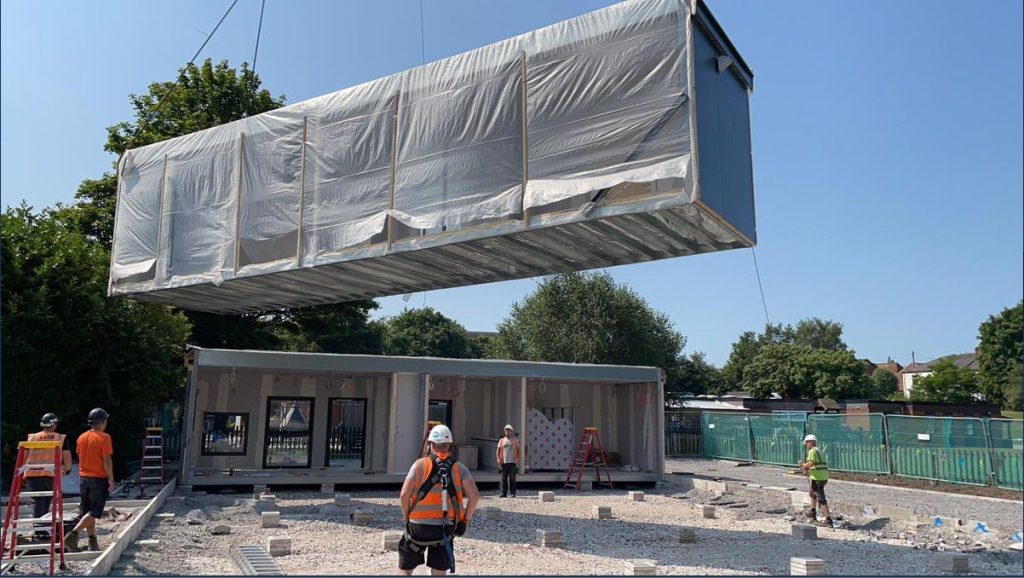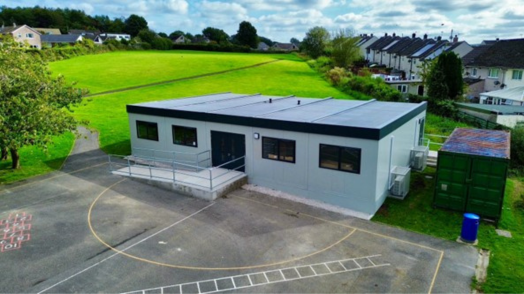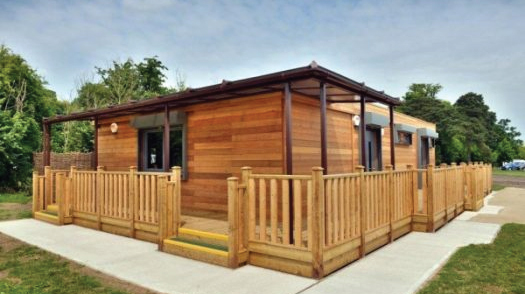Contact our friendly team for more information on our full range of buildings and how to start the process of hiring or buying a modular building for your business. Our expert team is always available to give advice, guidance or support.
Published: 11 September 2023 in Industry News
How Modular Buildings can help with RAAC

Developed in the 1920’s, reinforced Autoclaved Aerated Concrete (RAAC) is a lightweight form of concrete.
Between 1950’s-1980’s, Reinforced Autoclaved Aerated Concrete (RAAC) was used in the construction of thousands of public buildings as a cheap, lightweight alternative to traditional concrete.
Unfortunately, many of these buildings were schools.
Following a number of RAAC failings over the last few decades, the Health and Safety Executive announced that: “RAAC is now life-expired. It is liable to collapse with little or no notice.”
Just last week, Education Secretary Gillian Keegan revealed that more than 100 educational establishments in England have been ordered to close due to the presence of Reinforced Autoclaved Aerated Concrete.
In light of this, the Department for Education is now urging all schools to test for RAAC. In addition, any school with confirmed RAAC should no longer be open without mitigations in place.
So, where does this leave the schools, colleges, and nurseries that have been affected by the RAAC crisis?
Modular buildings are a highly effective solution for addressing many RAAC problems. They offer several advantages that make them well-suited, particularly for the specific needs of the education sector.
Here’s why:
- Reinforced Autoclaved Aerated Concrete (RAAC): Modular buildings are constructed without the use of RAAC.
- Speed of Construction: Modular buildings are constructed off-site in a controlled factory environment and concurrently with site preparation. This significantly reduces construction time, making them an excellent choice to rapidly address the need for new space, whatever that may be.
- Quality Control: Modular construction involves rigorous quality control processes, resulting in consistent and high-quality building components. This reduces the chances of construction defects, removing concerns about building integrity.
- Flexibility: Modular buildings can be customised to meet specific design and functional requirements. This flexibility allows for tailored solutions that can address the unique needs of the sector, whether it’s new classrooms, nurseries or indeed anywhere space is needed and for any purpose.
- Scalability: Modular construction enables easy scalability. Buildings can be expanded or reconfigured to accommodate changing demands as the pupil register grows or new facilities are needed.
- Cost-Efficiency: The overall project cost is lower due to reduced construction time, factory efficiencies and lower labour cost.
- Sustainability: All modular construction methods incorporate sustainable practices and materials, contributing to green building initiatives and meeting environmental concerns.
- Minimal Disruption: Because a significant portion of the construction occurs off-site, there is less disruption to the surrounding area, relieving concerns about noise and inconvenience. Children and construction sites are clearly a source of potential danger and never a good mix. We generally plan installation during school holidays for this very reason.
- Adherence to Building Codes: Modular buildings are subject to the same building codes and regulations as traditional construction, ensuring compliance with all safety requirements.
- Customisation: Modular buildings can be designed to incorporate the latest technologies and facilities addressing the demand for modern, efficient, and technologically advanced spaces.
- Maintenance: Modular components are designed for easy maintenance and upgrades. This helps solve long-term maintenance issues.
- Energy Efficiency: All Springfield modular buildings are designed with energy-efficient features, helping reduce energy consumption and operational costs.
- Community Acceptance: Modular construction is increasingly accepted and recognised as a viable and high-quality construction method. The unattractive old green buildings many of us remember from our school days are long gone. Today’s buildings are, well whatever you want them to be! The choice of internal and external design and fittings is massive and enables you to create and design a space absolutely perfect for your needs.
While modular construction offers many advantages, your choice of supplier is crucial. It is essential to conduct thorough planning and engage experienced professionals to ensure a successful project. Considerations such as site selection, local planning regulations, groundworks, utilities etc. are critical to achieving the best results. We can manage all these factors, so you don’t have to.
Here at Springfield, we’ve been supplying modular buildings for the Education sector right across the UK for 50 years, so we like to think you’re in safe hands and dealing with people you can trust. Here are a few comments from our happy clients.
In summary, modular buildings can be a perfect solution for RAAC crisis by offering a faster, more flexible, and cost-effective way to meet the space requirements of the education sector.
We are already seeing high demand, so if you believe that modular is a way forward, we urge you to register your interest sooner rather than later.
Speak to one of our friendly design team, who will talk you through your options.
Springfield Mobile Limited – September 2023









